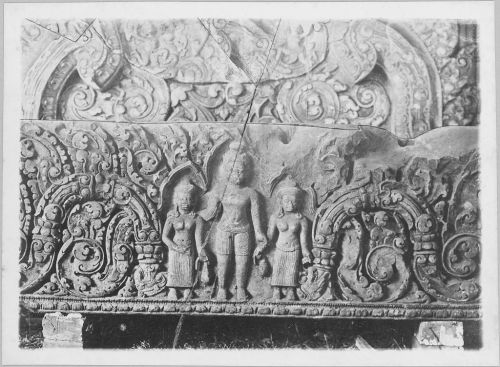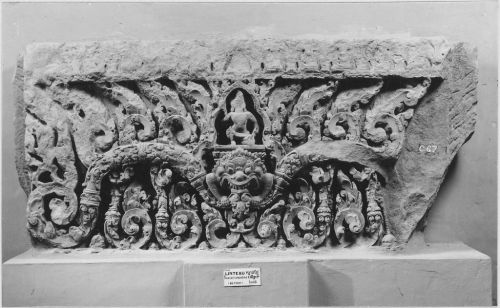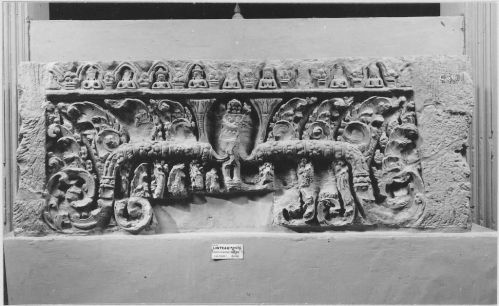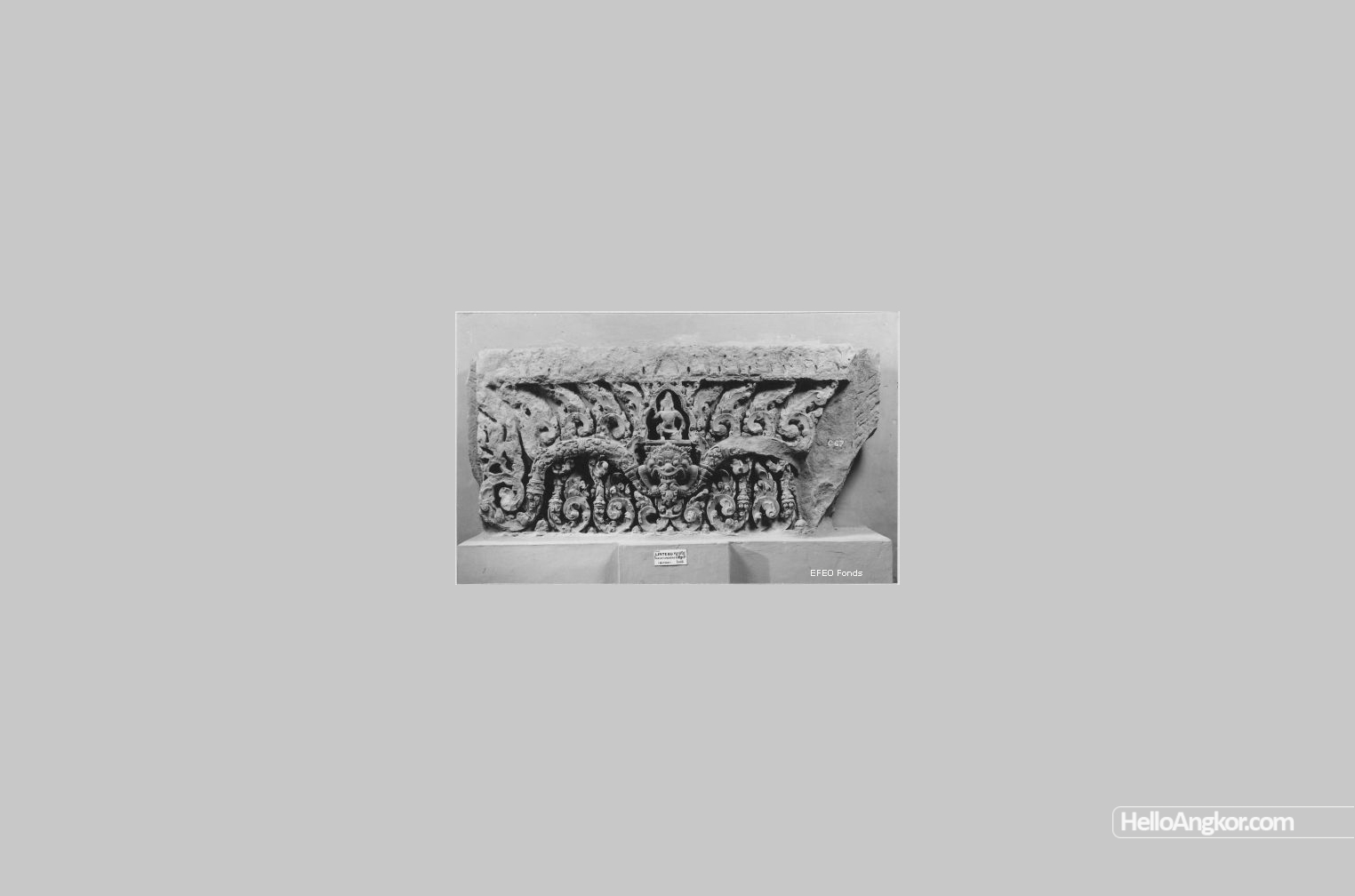The ancient site, speculated to be a group of three brick temples, was originally recorded as being located 800m west of Pr. Chikreng east, the most recent reports list the site as being located 2km to the northwest of Wat Chikreng. Regardless, nothing remains at the original site with remnants now stored at Wat Chikreng and two lintels in the Phnom Penh National Museum.
The first lintel below, recorded as being attributed to the Baphoun style of the 11th century is also recorded as coming from Prasat Chikreng (Wat Chikreng) as is the second which is recorded as being early tenth century from around the same era as developments at Koh Ker by one author, and as later 10th century Pre Rup style by another :).
Historical Images
Images via EFEO Fonds Cambodge attributed to Prasat Chikreng West. The first two lintels below are now on display at the Phnom Penh National Museum which records them as originating from Prasat Chikreng. The third lintel is listed by Brugieur as coming from Prasat Chikreng East.



Historical Notes
L. Lajonquire, 1902, on Prasat Chikreng (West) IK 201/Chikreng Khang Lech (Pr.)
This temple is nothing more than a heap of broken bricks covered with earth, hidden under a small wood, about 800 meters to the West of Prasat Chikreng (East).
It included, in all probability, a group of three square brick sanctuaries, open to the East. There remains only a trace of two doors, the debris of which, polygonal columns and decorative lintels were deposited in the EFEO museum after having appeared in Phnom Penh in January 1901. These two decorative Iintel in red sandstone are of type III: the central motif formed for both by the group of Indra on the three-headed elephant.
Inscription of Prasat Chikreng (West). A red sandstone stele was found between Prasat Chikreng (West) and Prasat Chikreng (East), abandoned in the tall grass. It’s both upper and lower extremities recently trimmed. It presents on one of its large faces a Khmer inscription of twelve lines, in writing of the tenth to eleventh-century caka, rather well preserved. An interpreter by the name of Meas has inscribed his name in large, deeply hollowed capitals. This stele, after passing, like the decorative lintels, through Phnom Penh, was collected in the EFEO museum.
Inscription
- K. 169 – stele – 12 lines of Khmer – unrecorded
Site Info
- Site Name: Chikreng Khang Lech (Pr.) Khmer Name: បា្រសាទជីក្រែង(លិច)
- Reference ID: HA11581 | Posted: January 20, 2021 | Last Update: July 17th, 2021
- Tags/Group: 10th Century, pr, Temples
- Location: Siem Reap Province > Chi Kraeng District > Chi Kraeng Commune > Chikreng Chas Village
- MoCFA ID: 294
- IK Number: 201
- Inscription Number/s: K. 169

